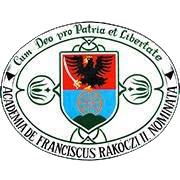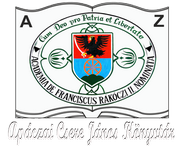Please use this identifier to cite or link to this item:
https://dspace.kmf.uz.ua/jspui/handle/123456789/455Full metadata record
| DC Field | Value | Language |
|---|---|---|
| dc.contributor.author | Szamborovszkyné Nagy Ibolya | hu |
| dc.contributor.author | Самборовскі-Нодь Ібоя | uk |
| dc.contributor.author | Ibolya Szamborovszky-Nagy | en |
| dc.date.accessioned | 2020-12-11T11:20:18Z | - |
| dc.date.available | 2020-12-11T11:20:18Z | - |
| dc.date.issued | 2012 | - |
| dc.identifier.citation | In Szamborovszkyné Nagy Ibolya (szerk.): „Így maradok meg hírvivőnek...”. In Memoriam Soós Kálmán. Tanulmányok Soós Kálmán emlékére. Ungvár, PoliPrint, 2012. pp. 179-197. | en |
| dc.identifier.isbn | 978-966-2595-22-2 | - |
| dc.identifier.uri | http://dspace.kmf.uz.ua:8080/jspui/handle/123456789/455 | - |
| dc.description | https://opac3.brff.monguz.hu:443/hu/record/-/record/140833 | en |
| dc.description | https://kmf.uz.ua/hu/kiadvanyaink/igy-maradok-meg-hirvivonek-tanulmanyok-soos-kalman-emlekere/ | en |
| dc.description.abstract | A szervezett tömegoktatás bevezetése óta, ami kontinensünk egyes régióiban már a 18. században beindult, a történelem sajátos helyet foglalt el az iskolai tantárgyak sorában. E sajátos szerepet annak köszönhette, hogy az állam (a 18–19. században az uralkodó) iránti lojalitás kialakításának folyamatában a történelem hatékonyan tudott beilleszkedni, időnként ki is szolgálva a fenntartó elvárásait. A mai nemzetállamok zöme ezen iskolai tárgy szerepét ugyanabban látja, mint azt egy-két évszázaddal ezelőtt a birodalmak látták. A történelem iskolai tárgyként kifejezetten alkalmas volt (s alkalmas ma is) a vezető ideológiai és politikai irányvonal közvetítésére. Jelen tanulmányban az oktatástörténeti aspektuson túl inkább a történetírás szemszögéből közelítettük meg a kérdést. Az adott időszak iskolai tárgyoktatási lehetőségeinek bemutatásával korképet próbáltunk rajzolni, ill. tükrözni az ország életében zajló események létrehozta folyamatokat. Csak a tárgyoktatás általános feltételeit mutatjuk be kronológiai rendben, nem térve ki sem a taneszközök, sem a szakdidaktika kérdésére. | hu |
| dc.description.abstract | Abstract. Since the introduction of organized mass education, which has already been started in certain regions of our continent in the 18th century, history took a particular place among school subjects. This peculiar role was due to the fact that history could efficiently fit in the process of building loyalty to the state (ruling in the 18-19th centuries) and from time to time it served the government’s expectations too. Most of today’s national states consider the role of this subject the same as the empires did one-two centuries before. History, as a school subject, was explicitly suitable (and is suitable today) for mediating the leading ideological and political line. The present study approaches the given topic rather from the point of view of historiography than from the aspect of the history of education. Showing the possibilities of teaching this subject in school during the given period we tried to give a snapshot of the period and reflect the processes induced by the events occurring in the country. The general conditions of teaching history are presented in chronological order without dealing with educational appliances and questions of special didactics. | en |
| dc.language.iso | hu | en |
| dc.publisher | PoliPrint | en |
| dc.rights | Attribution-NonCommercial-NoDerivs 3.0 United States | * |
| dc.rights.uri | http://creativecommons.org/licenses/by-nc-nd/3.0/us/ | * |
| dc.subject | történelemtanítás | hu |
| dc.subject | Ukrajna | hu |
| dc.subject | iskolai oktatás | hu |
| dc.title | Két évtized tükrében | en |
| dc.title.alternative | Az iskolai történelemtanítás helyzetének alakulása Ukrajnában (1991-2011) | en |
| dc.title.alternative | In the mirror of two decades the development of history teaching in the schools of Ukraine(1991-2011) | en |
| dc.type | dc.type.study | en |
| Appears in Collections: | Szamborovszkyné Nagy Ibolya | |
Files in This Item:
| File | Description | Size | Format | |
|---|---|---|---|---|
| SZNI_Ket_evtized_tukreben_2013.pdf | In Szamborovszkyné Nagy Ibolya (szerk.): „Így maradok meg hírvivőnek...”. In Memoriam Soós Kálmán. Tanulmányok Soós Kálmán emlékére. Ungvár, PoliPrint, 2012. pp. 179-197. | 858.95 kB | Adobe PDF | View/Open |
This item is licensed under a Creative Commons License





